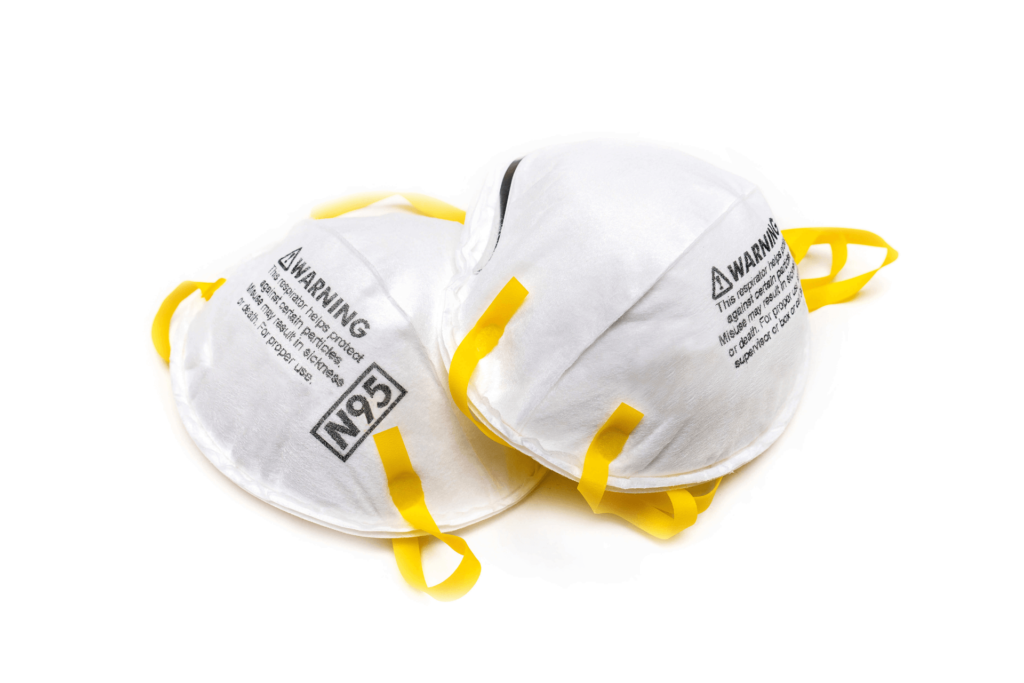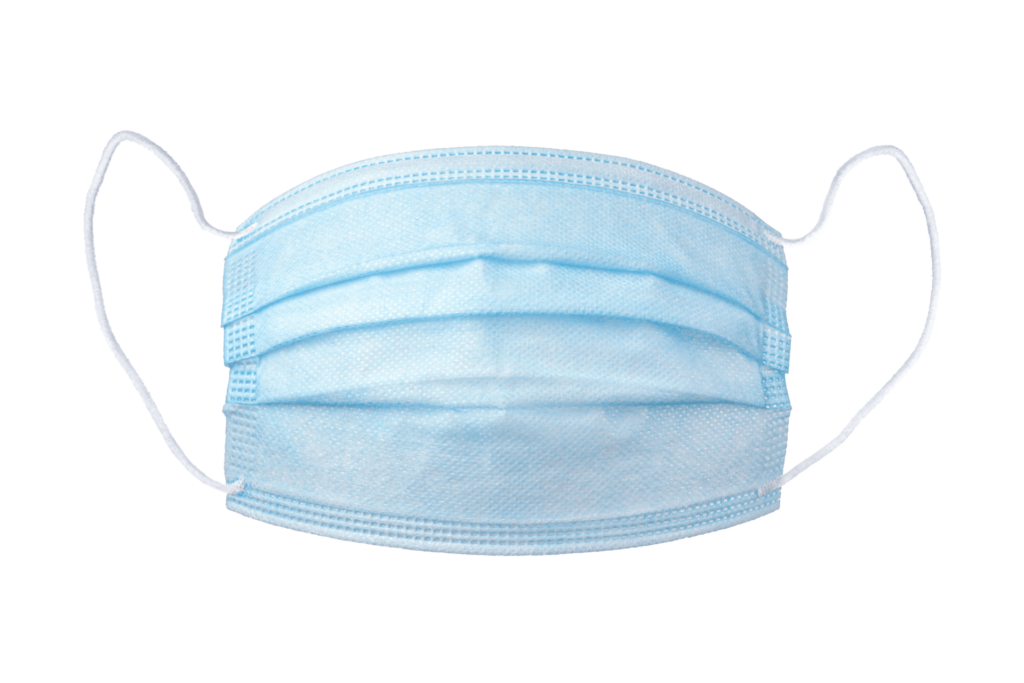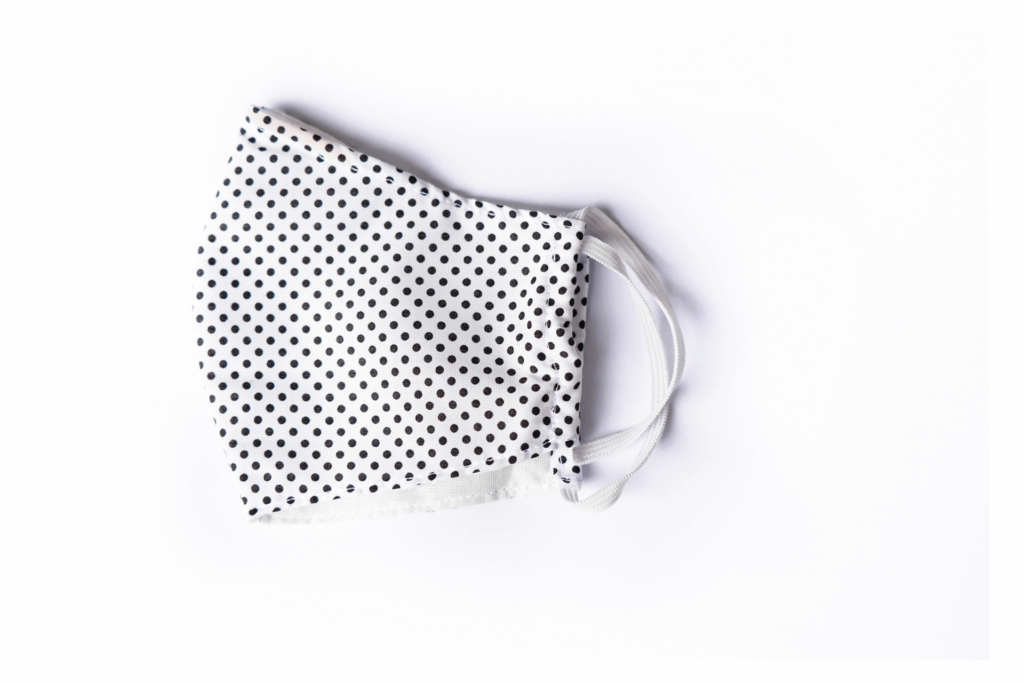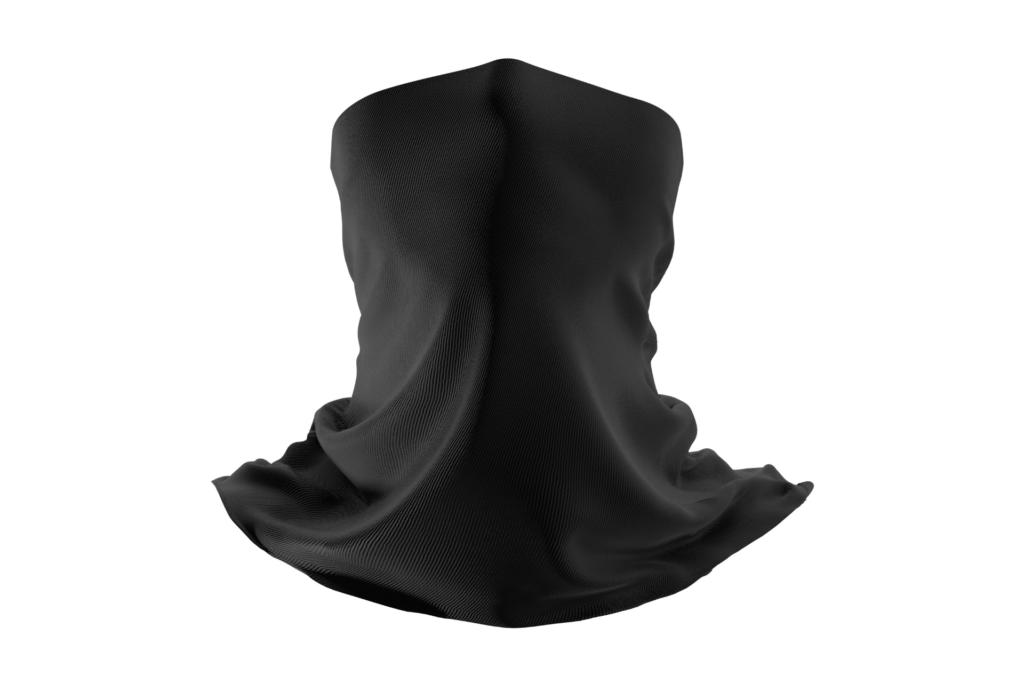Face masks have become an essential part of our daily lives, but with so many available options how do you know which type of mask is best? How well your face mask protects you from COVID-19 will depend on three major factors: what kind of mask you are using, how frequently you clean or dispose of it and whether you are wearing it correctly.
Follow along as we examine five different face covering options that will protect you and others from contracting COVID-19, but only when worn and cared for correctly.
N95 Masks
N95 masks filter at least 95% of airborne pathogens. The edges of an N95 mask are designed to create a tight seal around the mouth and nose for efficient filtration.
N95s and surgical masks, which we discuss below, are both tested for fluid resistance, filtration efficiency (particulate filtration efficiency and bacterial filtration efficiency), flammability and biocompatibility.
While N95s are expensive and durable, they are meant for one-time use. There are approved decontamination procedures that can be performed in medical settings, but health officials only recommend decontamination and reuse of N95s when there is a shortage.
Opportunists are unfortunately selling counterfeit N95 masks that are falsely sold and marketed as being approved by the National Institute for Occupational Safety and Health (NIOSH). In response, the CDC has created a list of approved N95 respirator manufacturers.
N95s are extremely effective, but they are not needed by the general public. The personal protective equipment (PPE) shortage has drastically impacted frontline workers. The CDC urges us to reserve N95 masks for medical professionals.
One concern over N95s is valved respirators, which are designed to filter air going in, not out. While an N95 mask with a valved respiratory will protect you the wearer, it puts those around you at risk of exposure. Some establishments, such as Pechanga Resort Casino, are banning valved respirators at the door for this reason.

Surgical Masks
Surgical masks are disposable face coverings typically worn by medical professionals while performing procedures or exams. They are commonly made of a combination of paper and plastic. While they come in a variety of colors like white and yellow, they are most commonly light blue.
The colored side of the surgical mask goes on the outside. If the mask is all white, you can identify the outside by identifying which side has perforations. The perforations should always be pointing downward so that particles do not become trapped and breathed in.
To put on the mask, hook the elastic strings behind your ears. Next, pinch the nose bridge wire at the top of the mask so that it fits snuggly around your nose. Finally, pull the bottom of the mask over your chin.
Surgical masks are meant for one time use. Immediately after using the mask, throw it in the trash. Surgical masks have become increasingly difficult to find and being that they are meant to be worn once, many have turned to more affordable options like cloth masks.

Cloth Masks
Cloth masks are reusable face coverings made from a variety of different fabrics. The thicker the barrier, the better protection. Tightly woven fabrics like cotton work best.
Cloth masks fit against the face with either ear loops, elastic bands or ties around the head. Similar to putting on a surgical mask, ensure that your nose and chin are thoroughly covered. There are many homemade options available online with step-by-step instructions. Many don’t even require a sewing machine.
While cloth masks are reusable, they must be cleaned frequently. At least one time per day is recommended. You can also purchase multiple cloth masks and rotate them. Either way, you should start each day with a clean cloth mask.

Neck Gaiters
Neck gaiters are tubes of fabric you slip over your head and pull up over the nose and mouth. A recent study co-authored by Duke professor Warren S. Warren found neck gaiters to be ineffective.
This is because neck gaiters are not meant to protect against airborne pathogens. They are most commonly manufactured and worn for sports. They are popular because they are convenient, but they are convenient because they are breathable. Neck gaiters do not restrict air, let alone respiratory droplets.
Neck gaiters in additional to bandanas will also prohibit you from entering certain establishments.

Face Shield
Face shields are another popular option. They are clear sheets of plastic that hang over the face from a headband. Like surgical masks they are frequently worn by medical professionals.
Face shields should be worn as a second layer of protection. While some people wear them as a substitute for face masks, particles can still get to your eyes, nose and mouth from under the face shield.
People who wear a face covering and keep six feet apart do not need to wear a face shield. If you choose to wear one, wipe it down with a household disinfectant regularly.

Should You Wear a Mask at All?
Wearing masks saves lives. While different masks work at varying degrees, wearing a mask is better than not wearing a mask at all.
Masks can be uncomfortable, hot and inconvenient, but they show that you care about your safety and those around you. Don’t only wear a mask, ensure that you are wearing it correctly, disposing of it if it is meant for single use or washing it frequently if it is reusable.
In addition to wearing a mask, make sure that you are washing or sanitizing your hands frequently throughout the day, maintaining six feet from others and disinfecting touchpoints on a regular basis.
